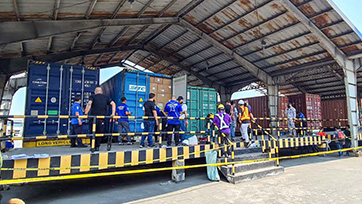-
Updates to the Bureau of Customs’ selectivity system increased the number of containers requiring examination, particularly those at Manila International Container Port
-
To address the increase in volume, 24-hour shifts were implemented to accelerate the examination rate of shipments
The Risk Management Office’s (RMO) updating of the selectivity system has bumped up the number of containers requiring examination, particularly at the Manila International Container Port (MICP), according to the Bureau of Customs (BOC).
In a statement, BOC said the implemented updates in its selectivity system to improve anti-smuggling and border protection efforts resulted in more containers that needed non-intrusive and physical examination, particularly at MICP.
To address the increase, BOC-MICP collaborated with the X-ray Inspection Project, Inspection Unit, Port Formal Entry Division, Customs Intelligence and Investigation Service, Enforcement and Security Service, and Piers and Inspection Division to implement 24-hour shifts to raise the examination rate of shipments.
“Presently, MICP has successfully addressed the increase of containers subject to examination. Containers requiring examination are now back to the normal rate,” BOC said.
BOC-MICP district collector Romeo Allan Rosales assured that MICP will continue to implement measures to address situations such as the increase in containers requiring inspection as BOC continues to enhance border security efforts.
BOC’s selectivity system refers to the use of risk-based color channeling to manage risks and allow the agency to “allocate its scarce resources to the high-risk areas while increasing the efficiency of the clearance process for low-risk shipments.”
In June last year, the agency introduced the Universal Risk Management System (URMS) to improve its risk management capabilities.
READ: BOC adopts new risk management system
The URMS was initially implemented at all ports and is expected to provide RMO, which oversees BOC’s selectivity system, with a quicker means of tagging shipments.
RMO earlier said selection under the URMS is analytics-based through a memory-based reasoning feature that “enables risk and compliance prediction” as an artificial intelligence tool so as to promote automation and lessen human intervention in assisting traders.





